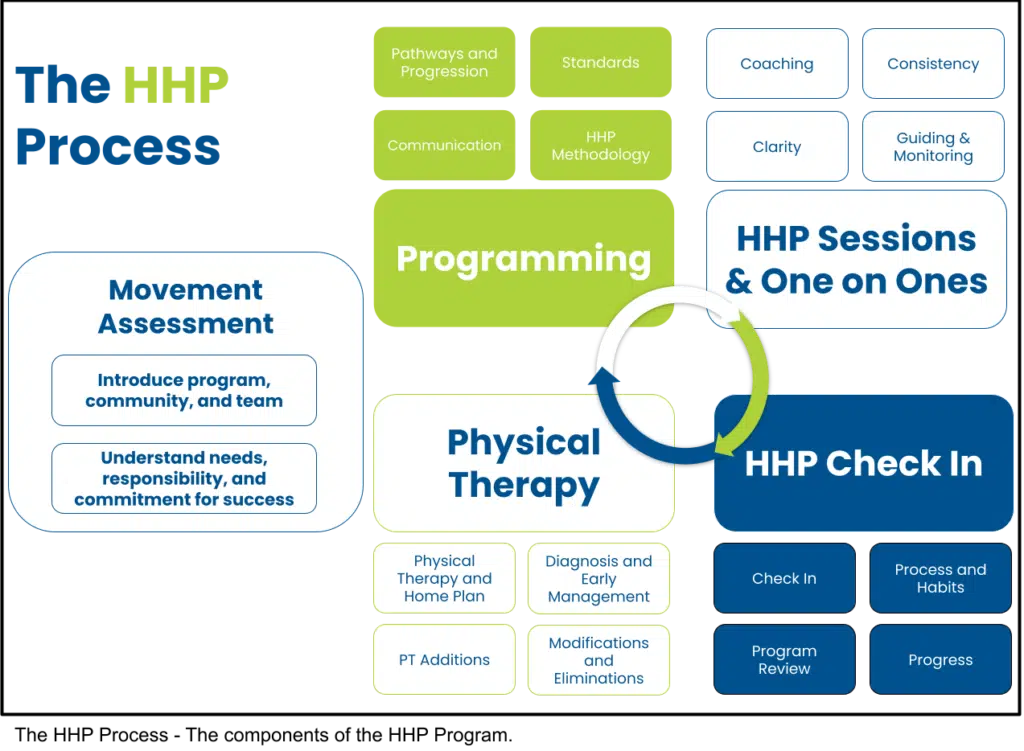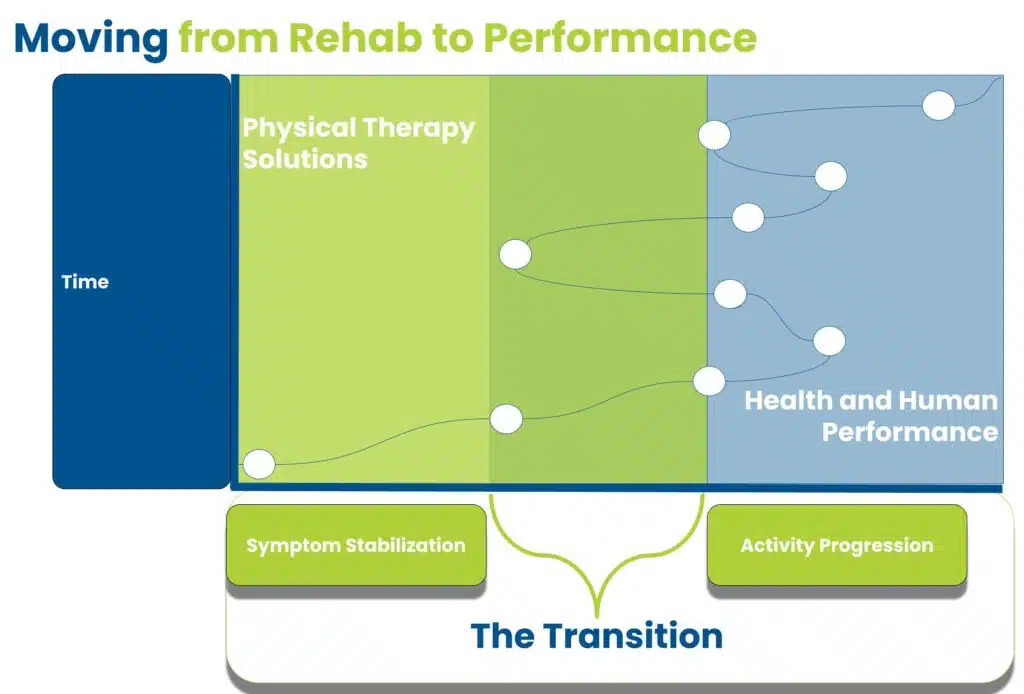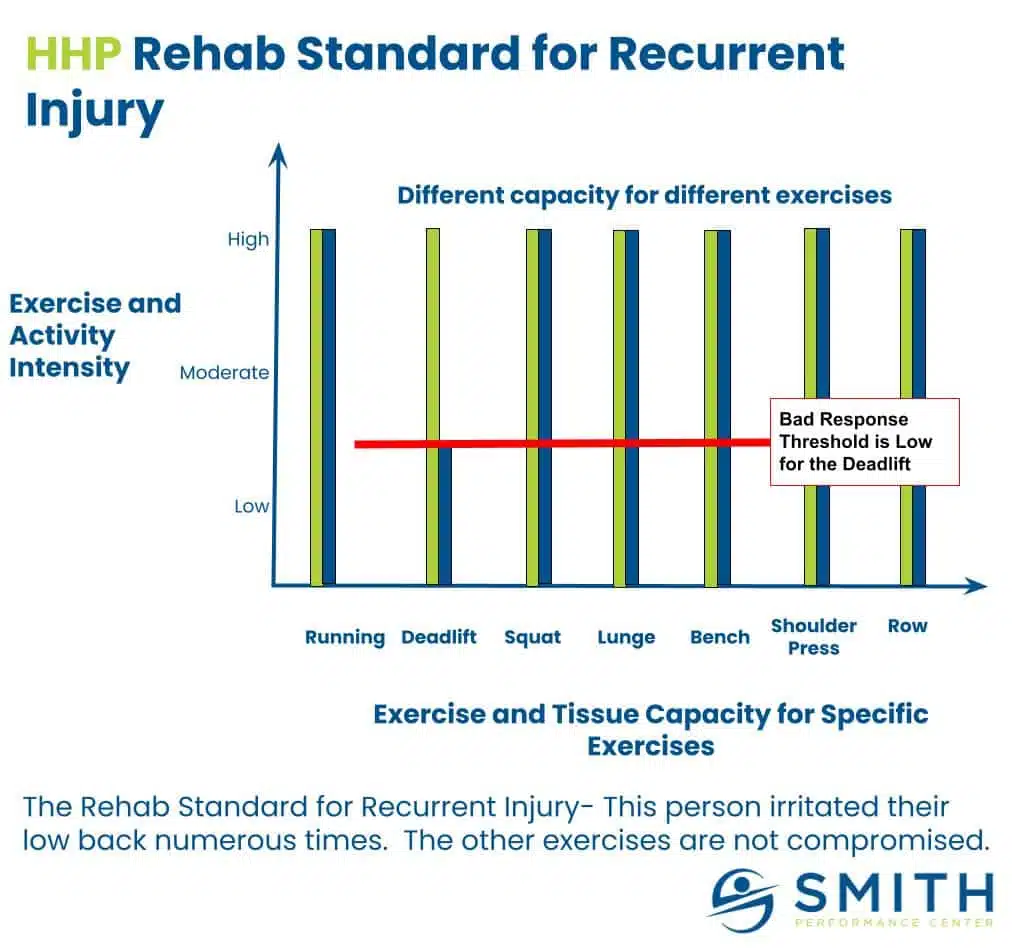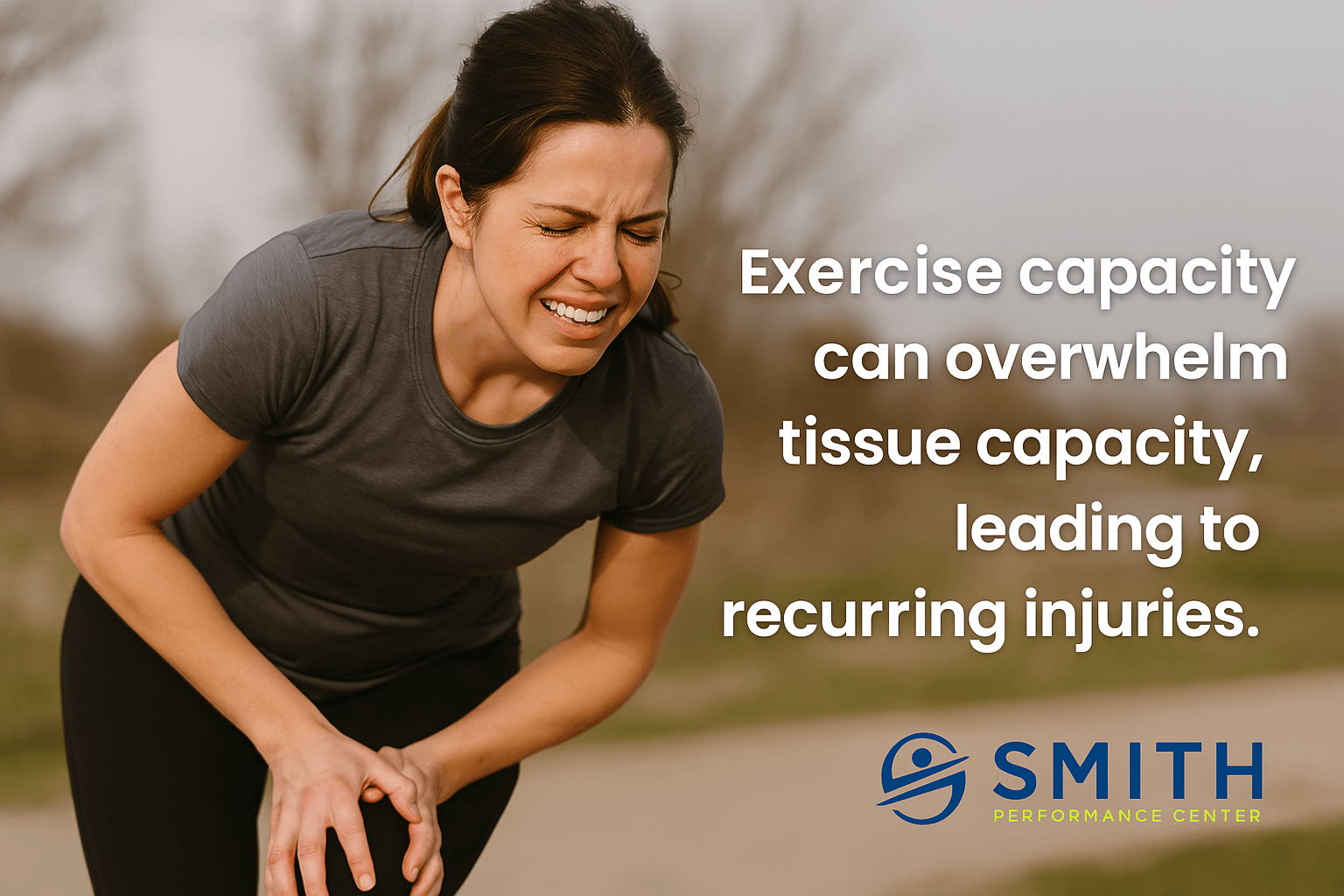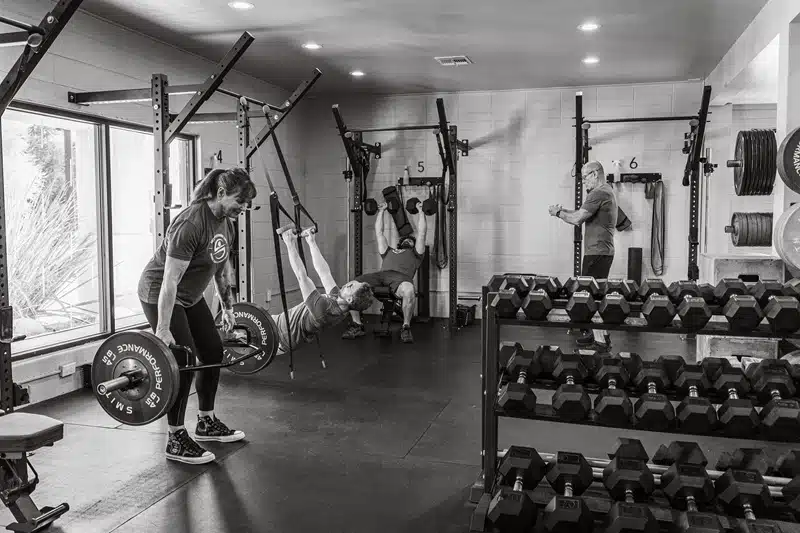The Smith Performance Center team wants to be the best in the world at helping clients who want to maintain an active lifestyle.
If you search the internet, this seems like a simple problem to solve. Just do this exercise or make sure to have protein after a workout. Problem solved. This has not been our experience. There is an entire area of research devoted to what behaviors keep people moving and what makes them stop. Keeping people active is not simple and there are numerous reasons why a person will stop.
The purpose of the movement assessment is to figure out issues that will stop you from moving.
There are clues in your history, how you move, how you hurt, and how you think that will help guide us.
Here are the 8 reasons we do the movement assessment:
- Figure out what may lead to failure
- Determine the right exercise pool and starting point
- Schedule a session with a physical therapist if there is pain or an injury
- Understand coaching need
- Explore your comfort level in a gym (group or individual training setting)
- Monitor your response to functional movements and first exercise experience
- Increase familiarity with the HHP Program
- Provide recommendations that will help you lead an active lifestyle
1. Figure out what may lead to failure
If we pick the right path with the right amount of support, the likelihood of you stopping is reduced dramatically.
We have a 5-step assessment that looks at accountability, comfort level, location, coaching need, and rehab standard. If any of these are issues, we need to adjust your program to support it.
Accountability – Some of us require an accountability partner to get to the gym. The social component keeps us showing up because a training partner is there waiting for us. Without it, motivation is not enough.
Comfort level – Do you feel comfortable in your training space or do you feel weird and out of place? The assumption that this improves with exposure is not necessarily true. There may be a reason you feel comfortable exercising with a video at home while a gym makes you want to stop exercising.
Location – If you do not live relatively close to where you exercise, there is a greater time commitment. This can feed into issues of accountability. Knowing that location is an issue (we consider more than 20 minutes an issue) gives us the opportunity to develop a plan for long-term success. This can be online training, in-person sessions on the weekend, or one-on-one sessions to support home training.
Coaching need – Do you need help performing a movement well? Do you maintain form with fatigue? Do you have a key sign that changes with exercise which indicates you are hurting your body? Are you skipping movements because you are not picking a good weight or because the movement is too challenging? All of these mean you would benefit from a coach’s presence.
Rehab standard – The majority of programs only consider how hard you work. The number one mistake we see with people returning to an active lifestyle is exercising at a level that overloads the tissue that was injured. This violation of what we call the rehab standard means you never progress. You keep getting hurt and never actually develop resilience.
2. Determine the right exercise pool and starting point
Exercise variety does not help new members.
We believe that as your confidence and competence in movement improve, the exercise variety increases. The vast majority of exercises are based on 6 primary movements. These 6 movements, when used as a foundation, make every progression moving forward more effective.
During the assessment, we select the exercise pool level that will make you have the best workout with the least amount of risk.
3. Schedule a session with a physical therapist if there is pain or an injury
An injury left unmanaged is the number one reason people stop exercising.
If you have an injury, this needs to be addressed immediately. If you are starting after treatment with our physical therapists, then we want to make you handle the transition well.
Unfortunately, a large portion of our new members downplay their pain because they have dealt with it for so long. This limits your progress and dramatically increases the likelihood of stopping exercise.
By involving the physical therapy team, we can add in PT additions or HHP Protocols to manage the injury while getting back to an active lifestyle.
4. Understand coaching need
The level of coaching needed is not the same between people.
Let’s imagine you have trained for 8 years in a gym. You feel confident in your movement patterns and minimal cueing is required for you to correct a pattern. This would require less coaching.
Now envision the opposite. This is the first workout you have done outside cardio and each movement requires significant coaching. You will require more focused, one on one attention.
Coaching needs can change as well if there is a new problem or if you are returning from an injury.
5. Explore your comfort level in a gym (group or individual setting)
This is best explored with a question: do you feel nervous exercising in a group setting?
If you do, then comfort level is an issue. There is nothing wrong with feeling nervous about going to a gym. As you gain movement competence and confidence, this nervousness usually resolves. However, this is not always the case which is why we provide different options such as one on one only or one on ones with online programming.
The most important consideration is where you will have success.
6. Monitor your response to functional movements and first exercise experience
The movement assessment is not a full workout, however many of our members have had a strong response to their first exposure to the 6 functional movements.
A strong response would be excessive soreness or a flare-up in pain. This can develop the same day, the next day, or often two days after the movement assessment. Despite what you may have heard, massive soreness is not the goal of exercise. We want mild soreness at the most (preferably no soreness) after exercise.
The movement assessment followed by an HHP check-in allows us to see if the program and loading need to be lowered.
7. Exposure to the HHP Program
The HHP Program is not a gym membership.
We are not LA Fitness or Golds. We do not do CrossFit or powerlifting or Orange Theory. Our team respects organizations that promote movement in our community, but we tackle the problem differently. We care if you quit exercising. Your workouts are on the SPC app and you input what you did. We are accessible throughout the week and want to see that you tolerate your workouts well.
There is a learning curve and we want to get you comfortable using the HHP membership and the app.
8. Provide our recommendation for moving forward
Finally, our coaches will provide you with a recommendation on how to move forward.
There are 5 pathways for clients using the movement assessment:
- In Person HHP membership
- One on One sessions with In Person HHP membership
- One on One sessions only
- Online HHP membership with or without periodic One on One sessions
- Continue on their own without the HHP program
If our coaches capture an issue from the 5-step assessment that indicates an issue that will lead to failure, we will help to work through the best solution with you.
For example, if you live an hour away, in-person sessions are not realistic long term. Instead, we recommend one on one sessions periodically (one time per month to every 10 weeks) with an online program.
If you struggle to force yourself to exercise and in-person sessions with other people are intimidating, we recommend One on Ones only outside in-person session hours.
If you are coming back from an injury but have a long training history, we recommend in-person sessions as long as you have good responses to the exercises. If not, we may have one on ones for specific exercises that are causing problems. For example, we may determine the deadlift motion is a big trigger movement. You may need extra coaching for a period of time with it.
Sometimes we are not the right place. We want to make sure that you get a good recommendation on how to move forward even if you do not use our program.

